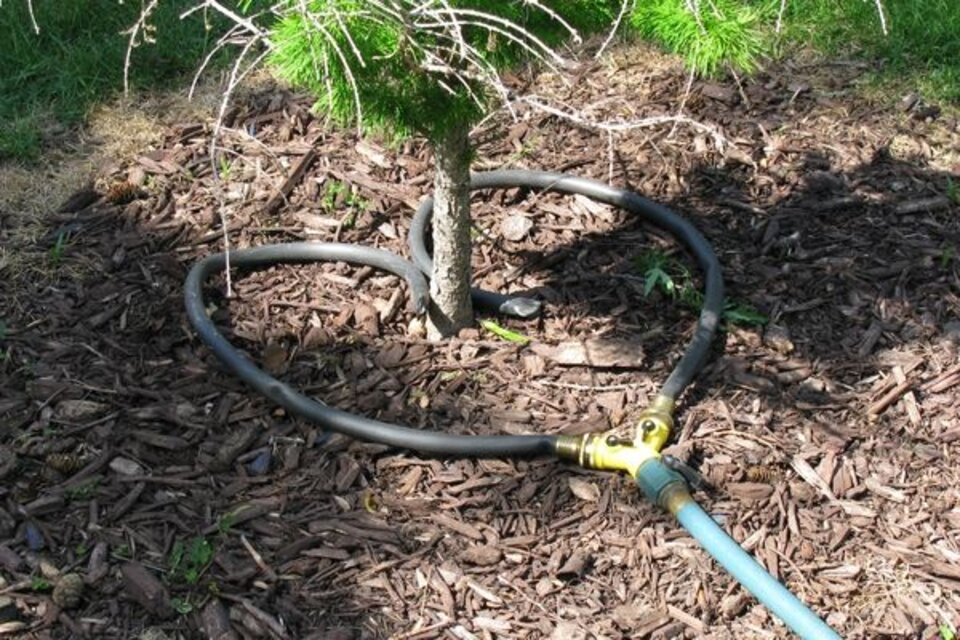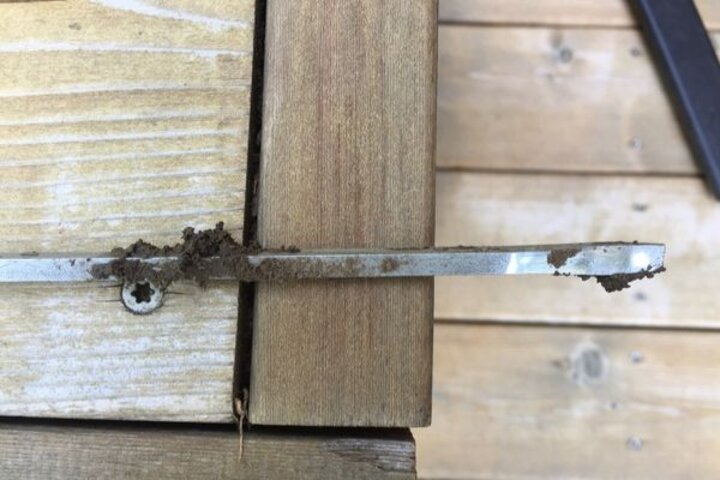Follow-Up Care for Newly Planted Trees

When a tree fails, it is sometimes difficult to determine the cause. In many cases, it is due to a failure to spread the roots out in the planting hole or simply planting it too deeply. Doing so leads to girdling or lack of an adequate amount of oxygen, resulting in death. Other than the correct planting procedure, lack of good follow-up care is the next most common cause. Each is very important in ensuring a successful planting. Just like planting errors, many follow-up procedures can be done improperly or forgotten altogether.
Watering
Watering a houseplant or patio planter is straightforward - fill a sprinkling can with water and apply it evenly across the top of the potting soil until about 10% of it drains out the bottom of the pot. Then, re-water when the soil is dry to the touch several inches into the pot.
Watering a newly planted tree is not as simple. Why? Look at the differences. In a houseplant, the soil is a perfect, evenly blended mix of water holding elements (Canadian peat moss, compost) and water draining elements (vermiculite, sand, perlite, bark, Styrofoam). With trees, the soil volume is much larger and often non-homogenous. Layers of differing soil types often exist, decreasing percolation. Houseplant pots have several holes in them to allow water to drain freely out the bottom. Gravity causes water to drain downward from newly planted tree root balls, but in some cases, not as freely, or much more freely than desirable.

With this in mind, it can be difficult to know how and when to water. A few guiding principles and techniques can help. First, probe the soil with a sharpened metal rod such as a piece of ree-bar or headless golf club. If the probe goes in easy and makes a sloshing sound, the soil is too wet. If the probe won't penetrate easily, it's probably too dry. Feeling the end of the probe Little Jack Horner style can also give you a hint about how moist the soil is, especially if a little soil sticks to it.
Secondly, most trees need only half to one third as much water as turf does. Keep this in mind when scheduling irrigation times. Third, separating turf and ornamental plantings is very helpful, because each is so different in terms of water need. A landscape with trees floating in an island of turf is problematic.
Depending on the arrangements of the landscape elements, temporary and permanent irrigation systems can be installed to provide the right amount. A thoroughly watered, but not soggy planting area is the goal, especially before the onset of winter. After installation of the system, monitor and measure the output to make sure that it is delivering water at the desirable rate.
This article was reviewed by Nicole Stoner